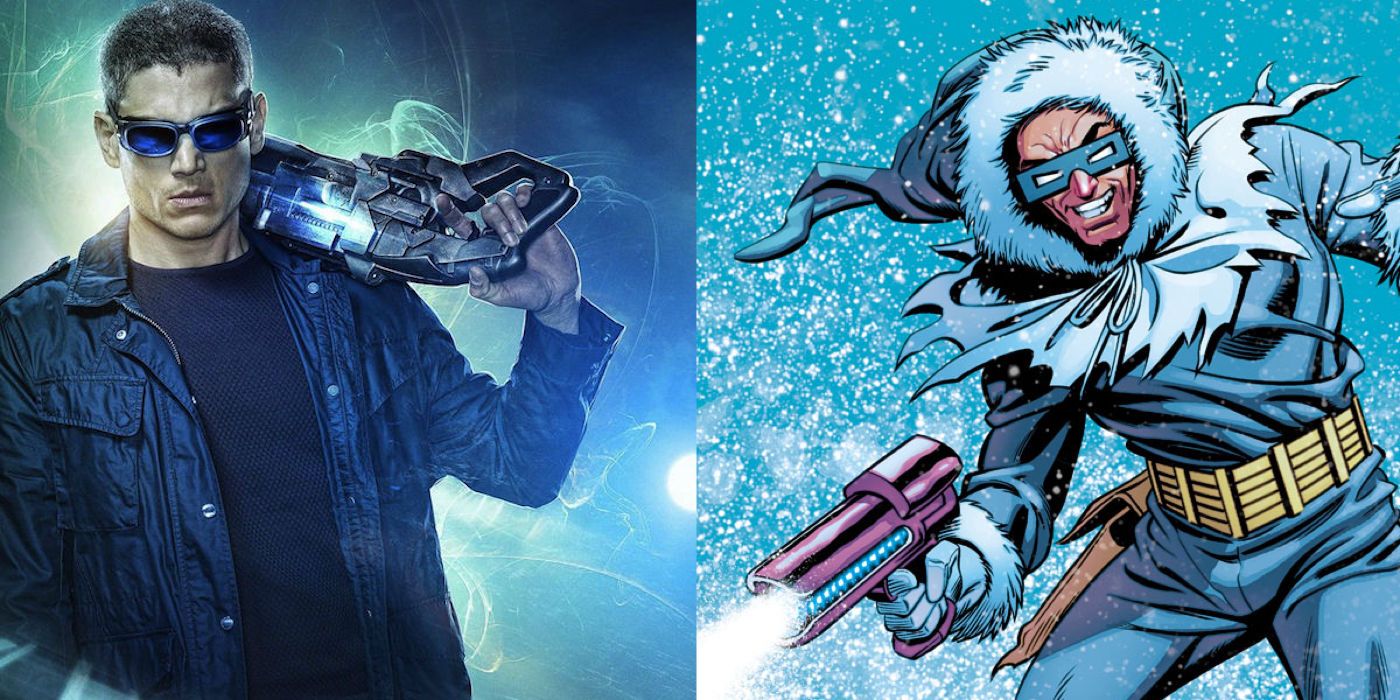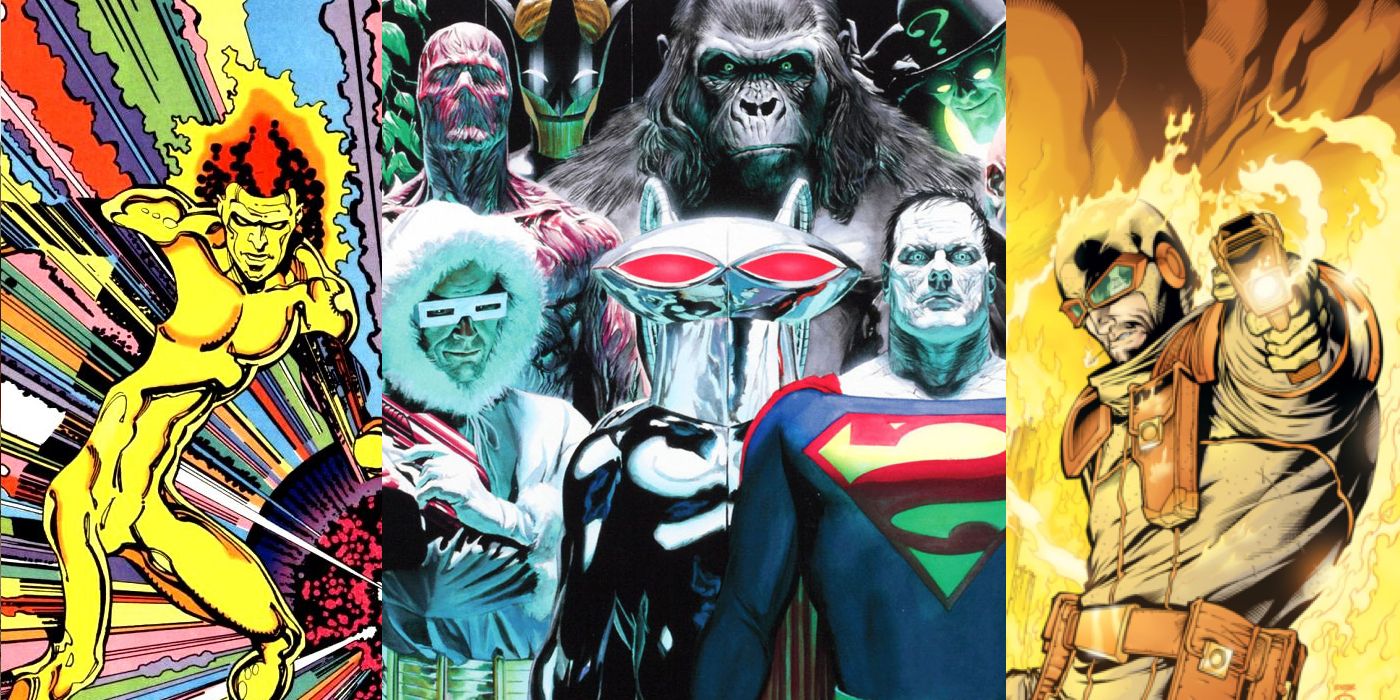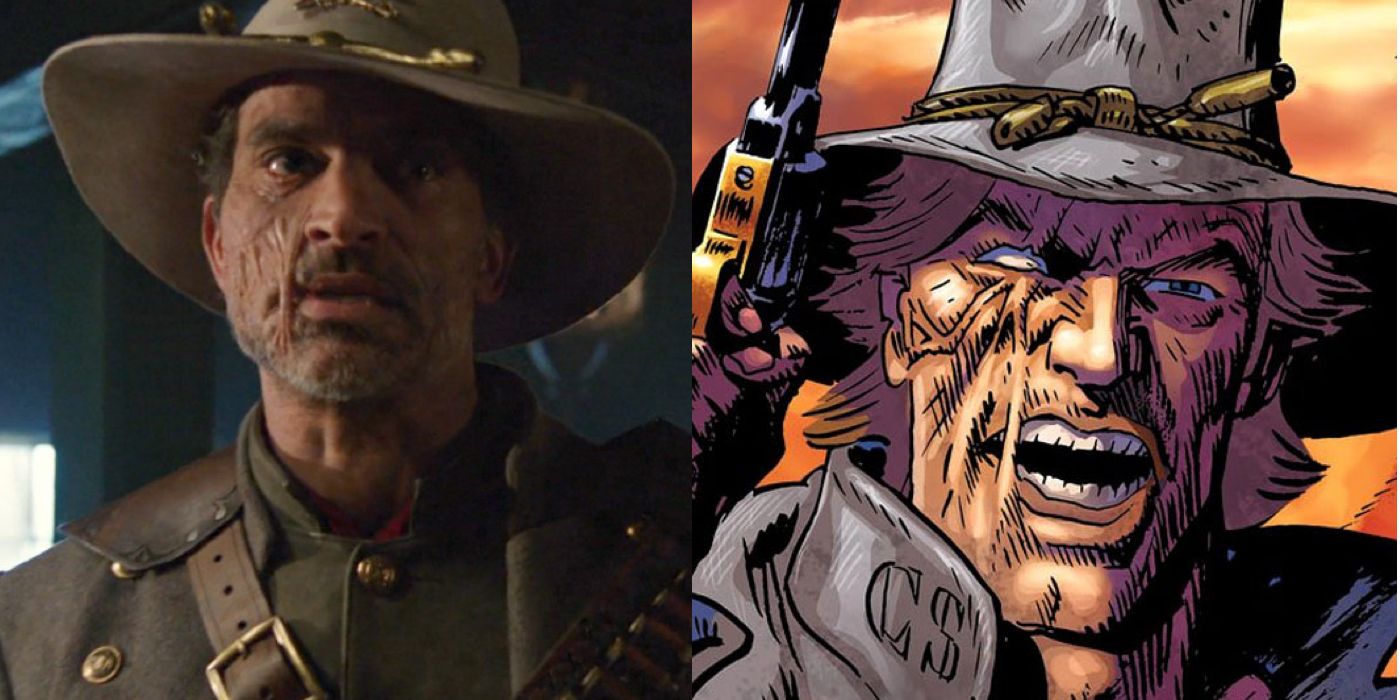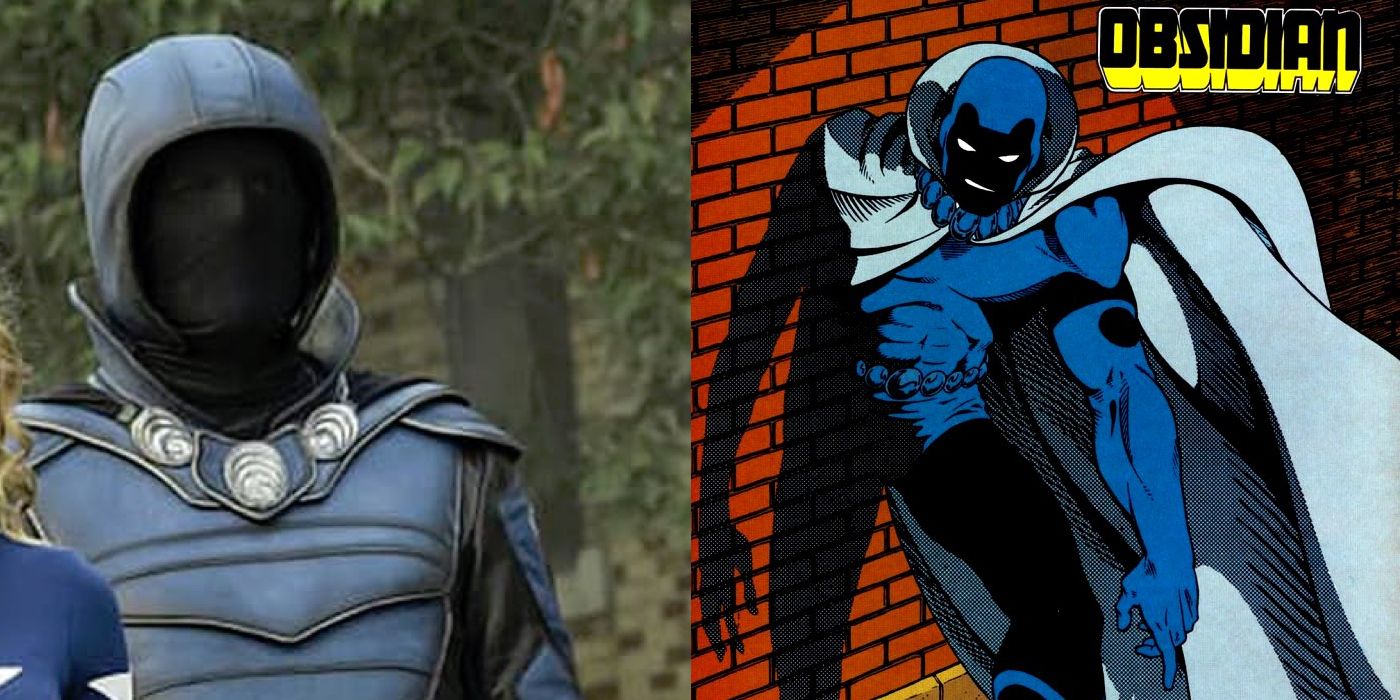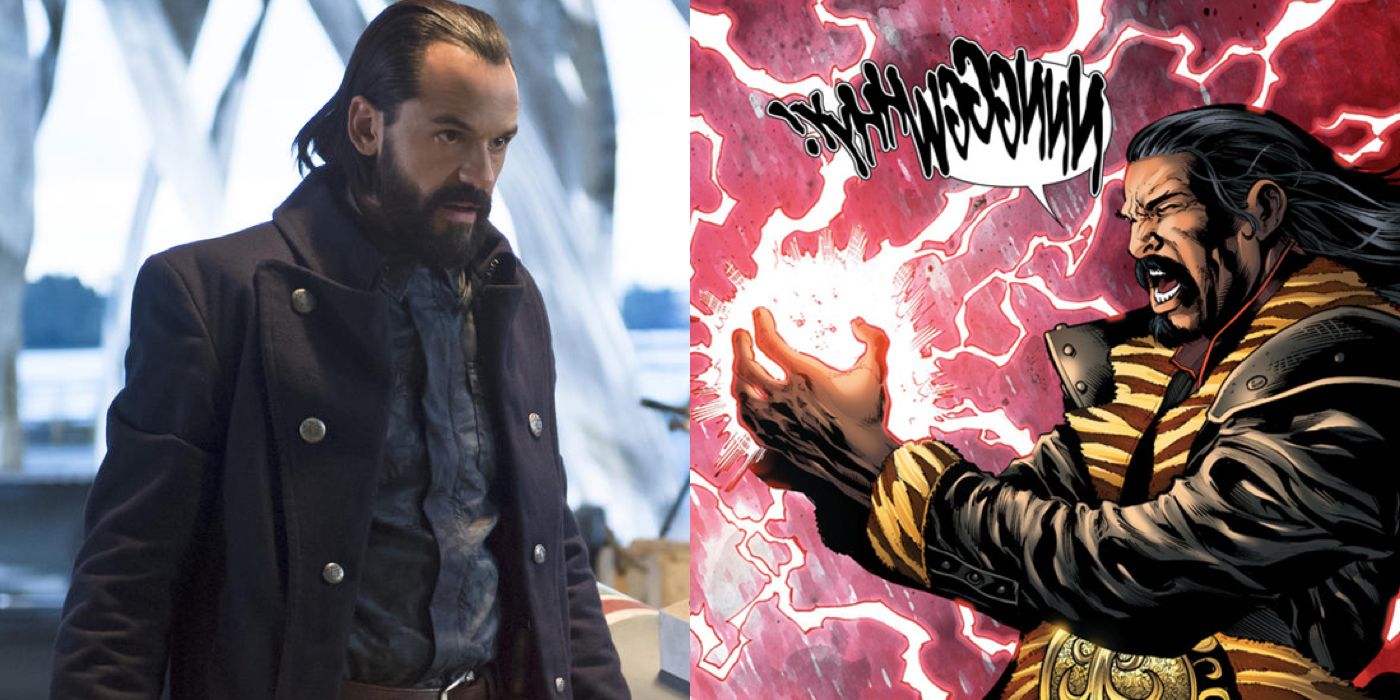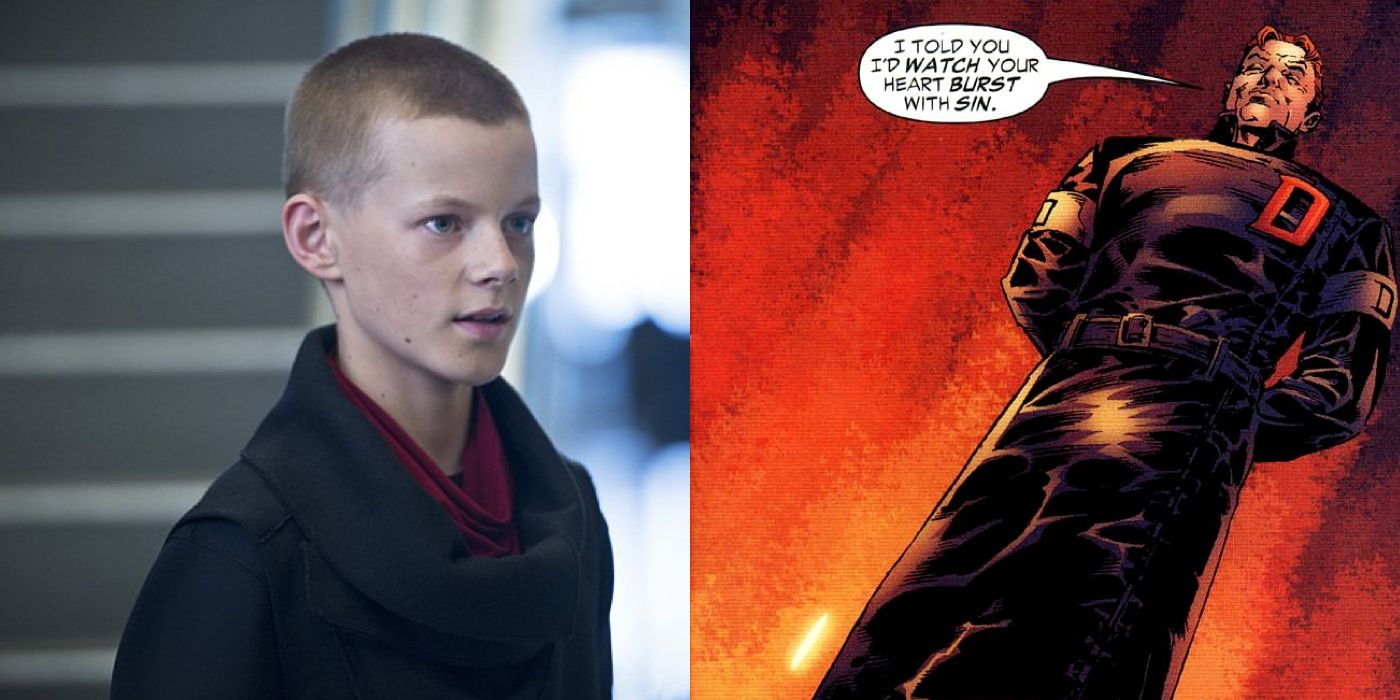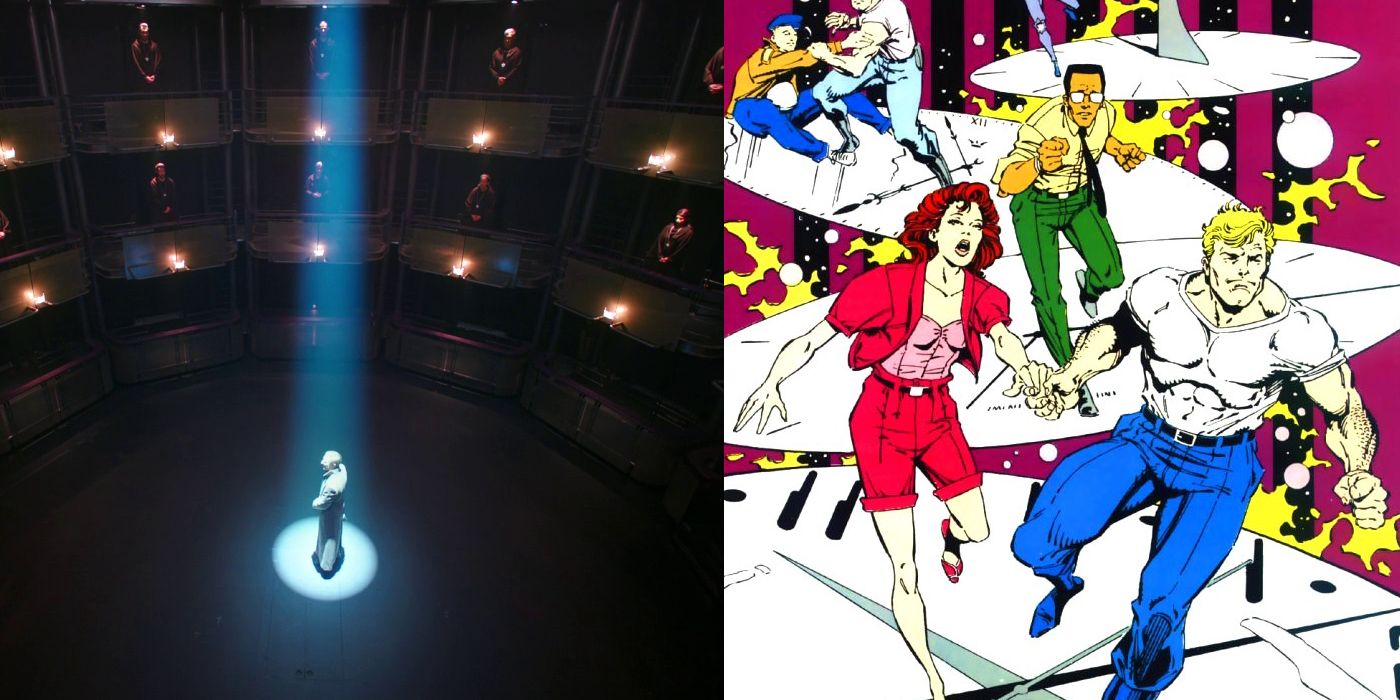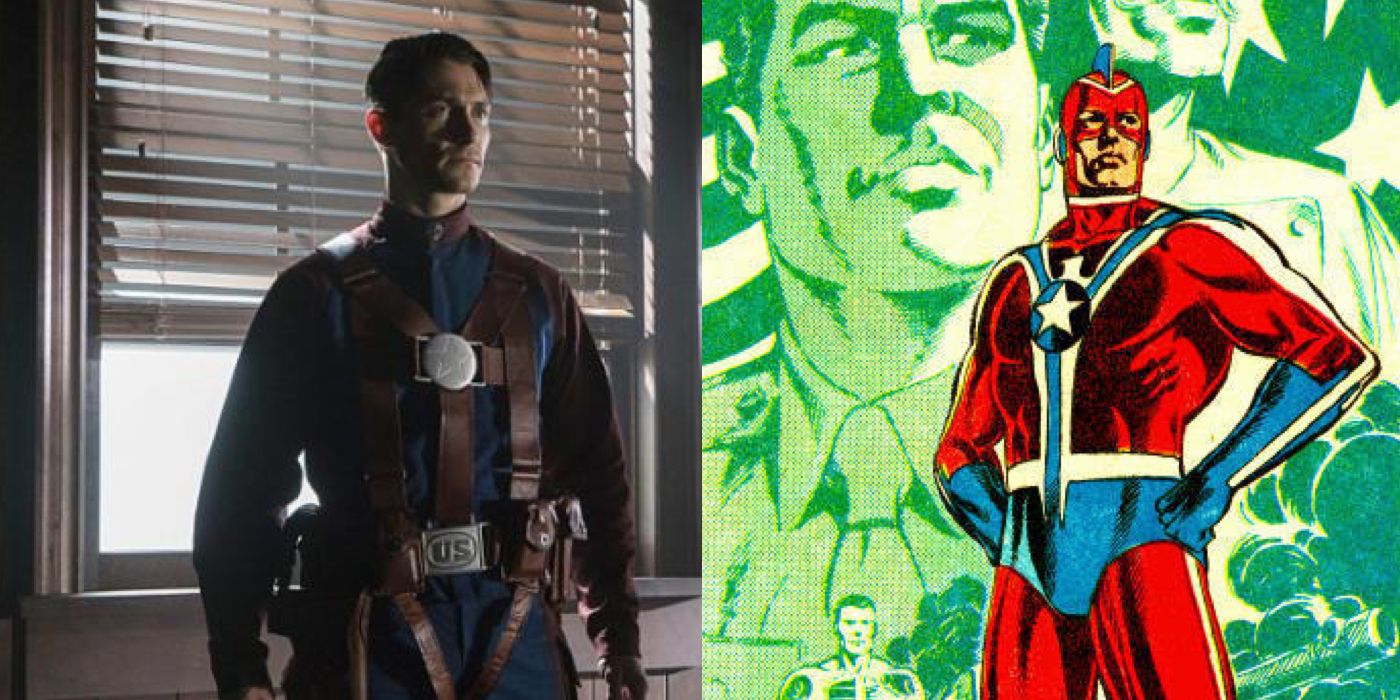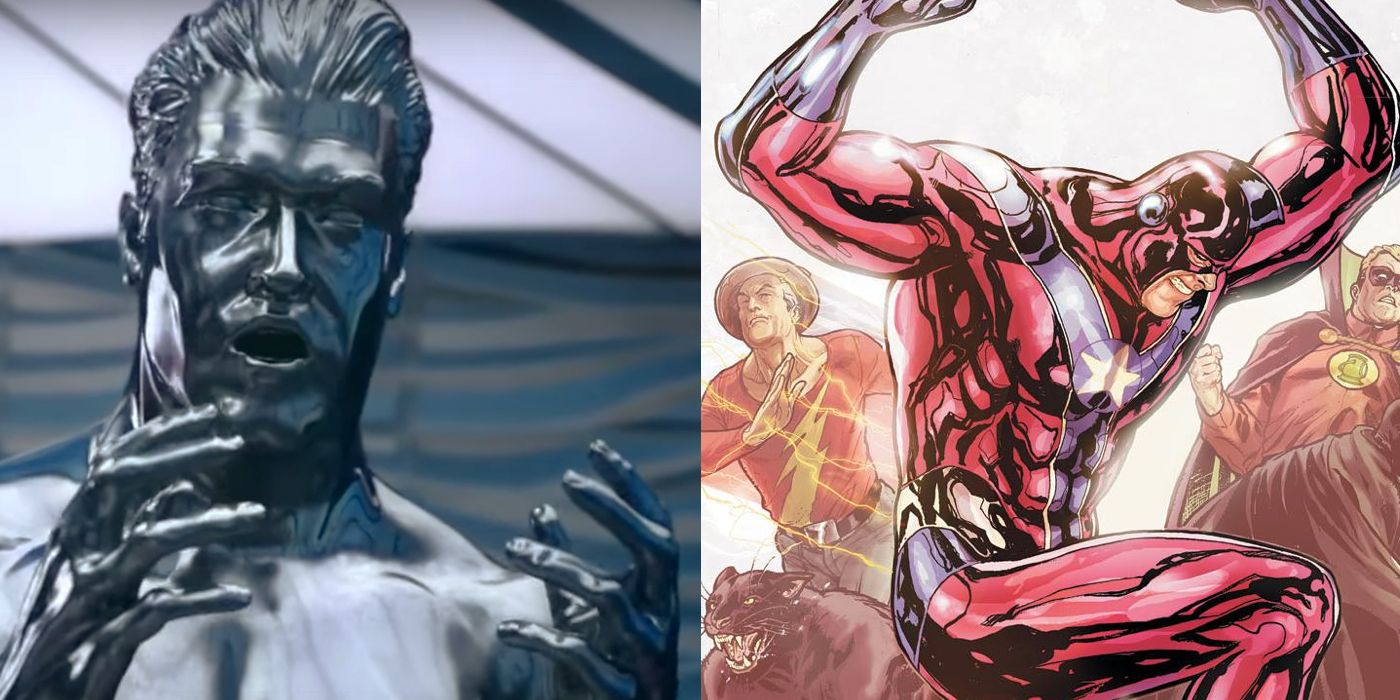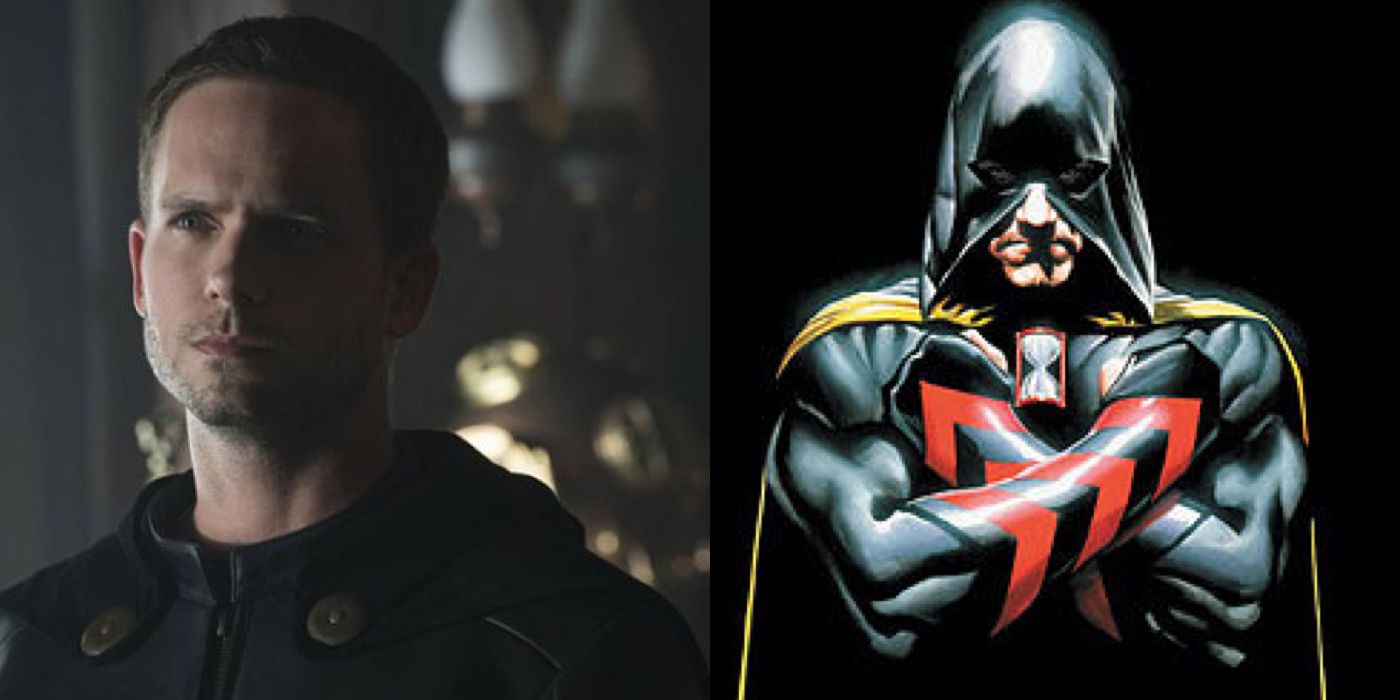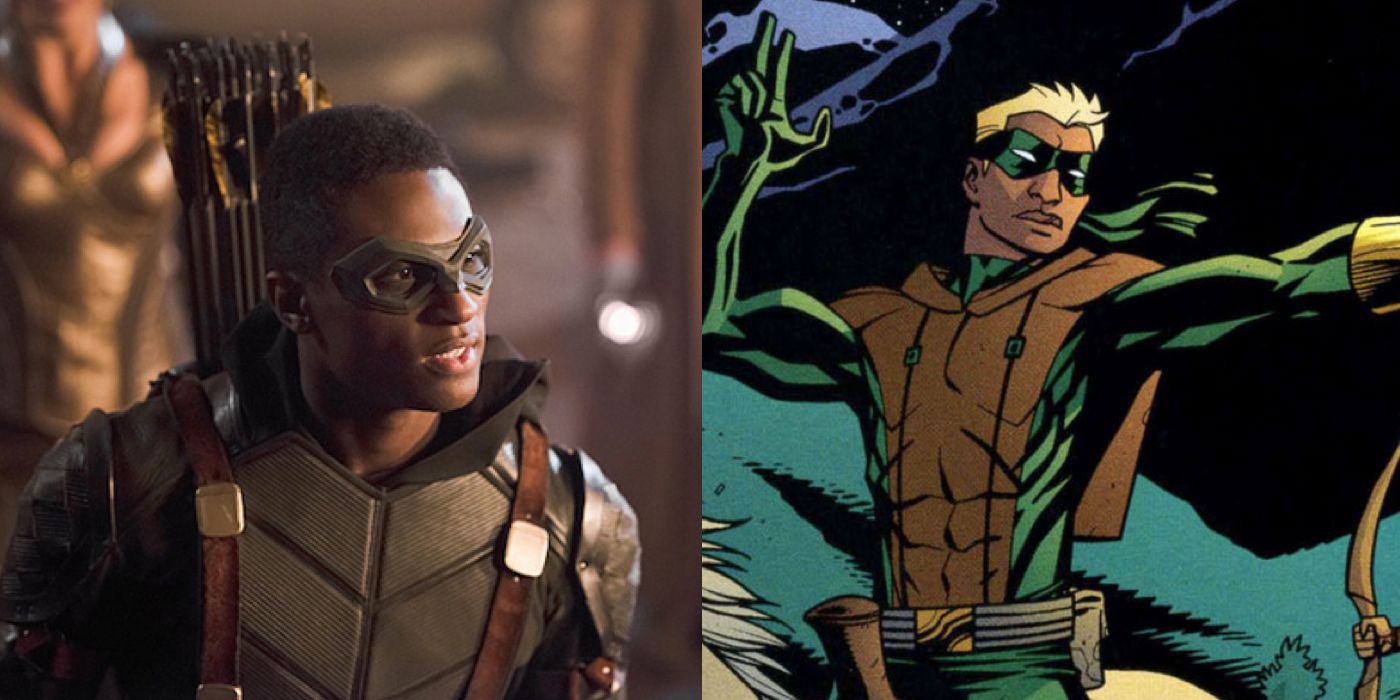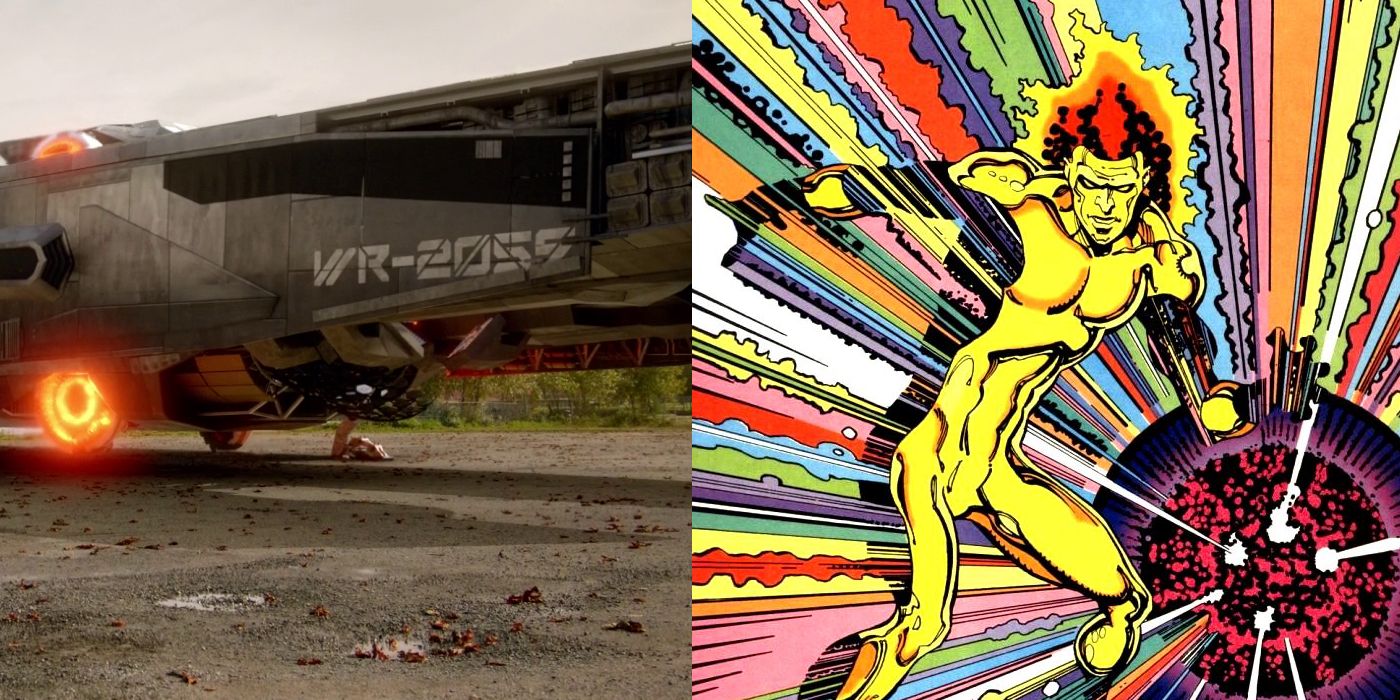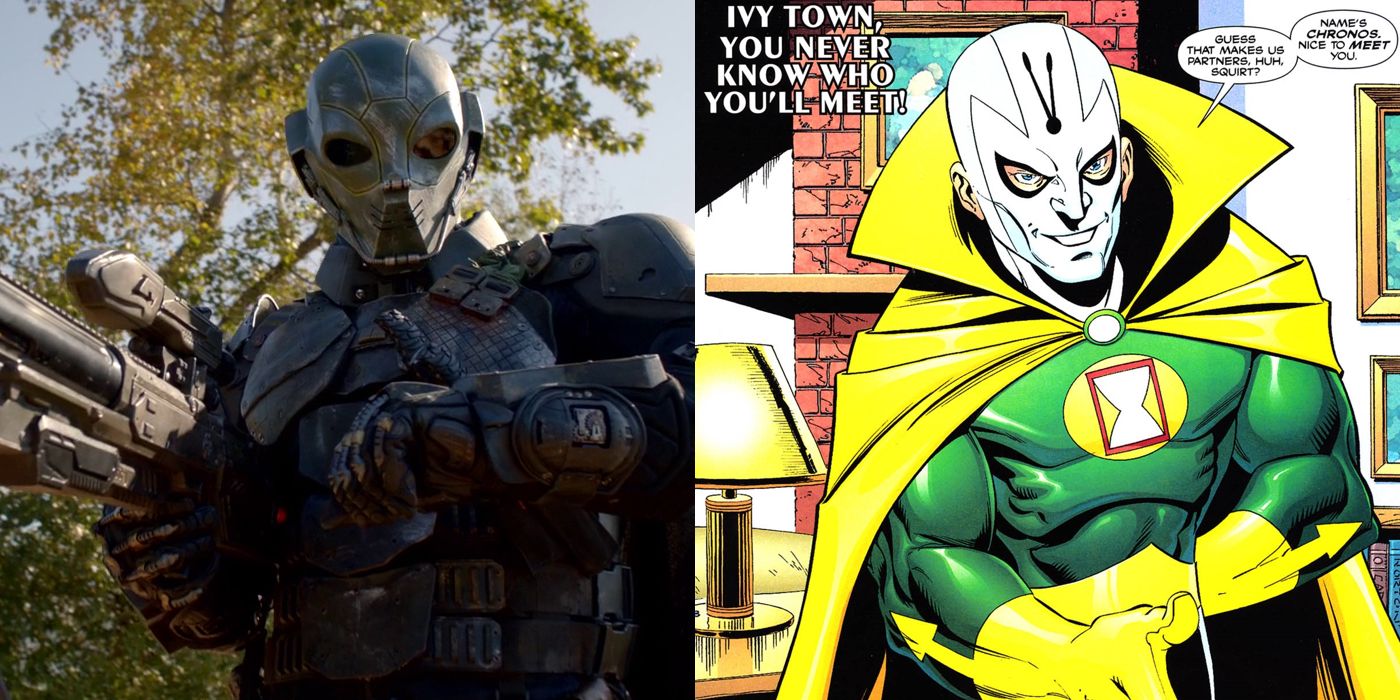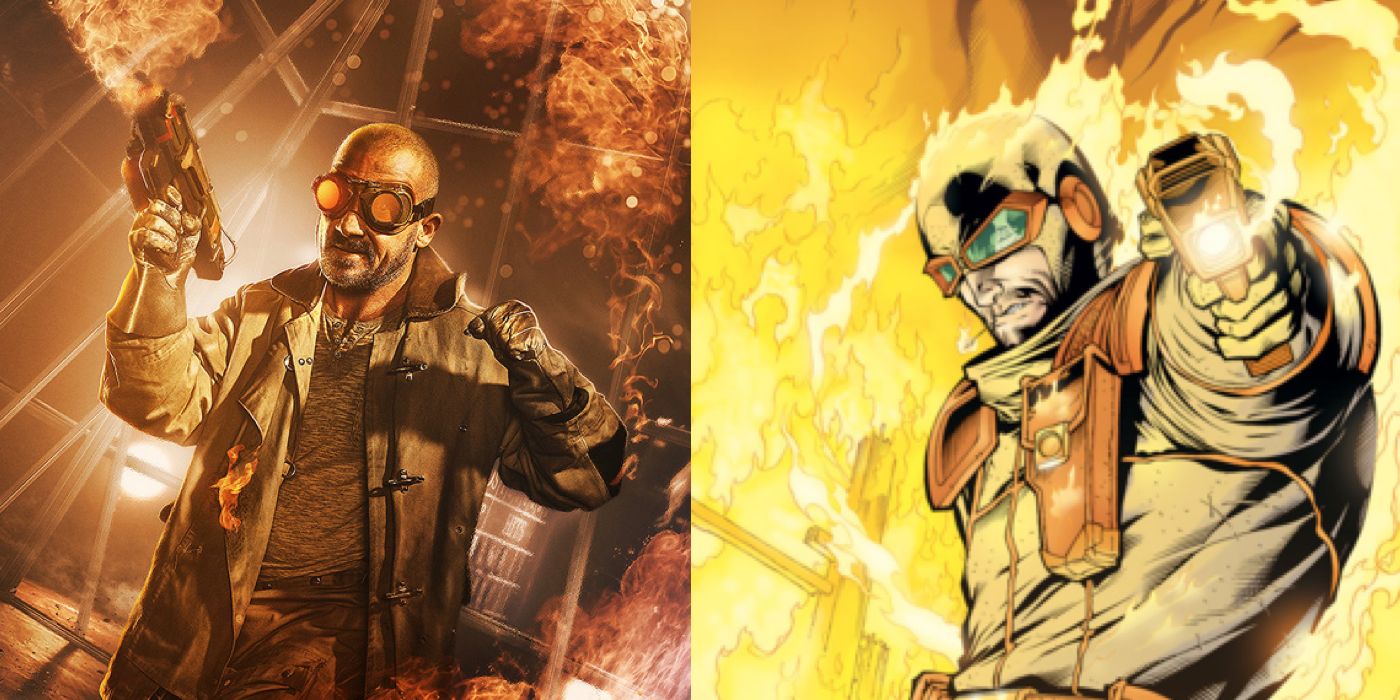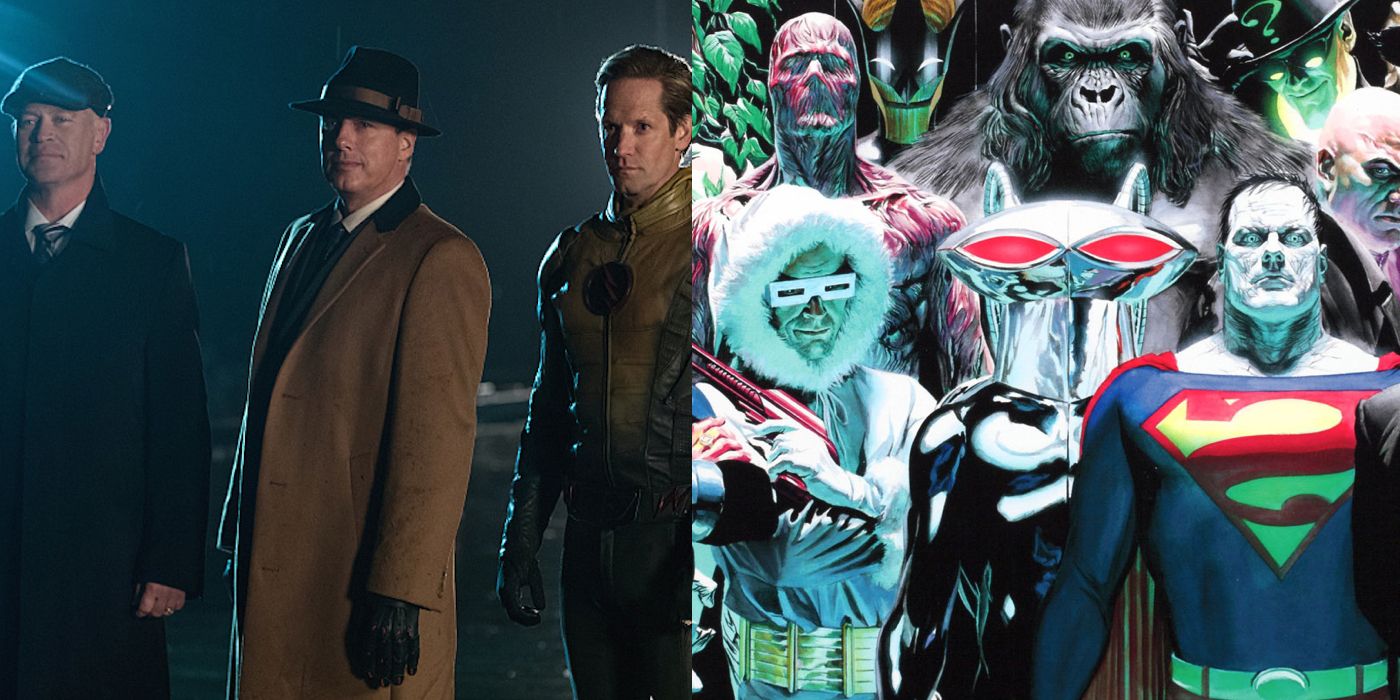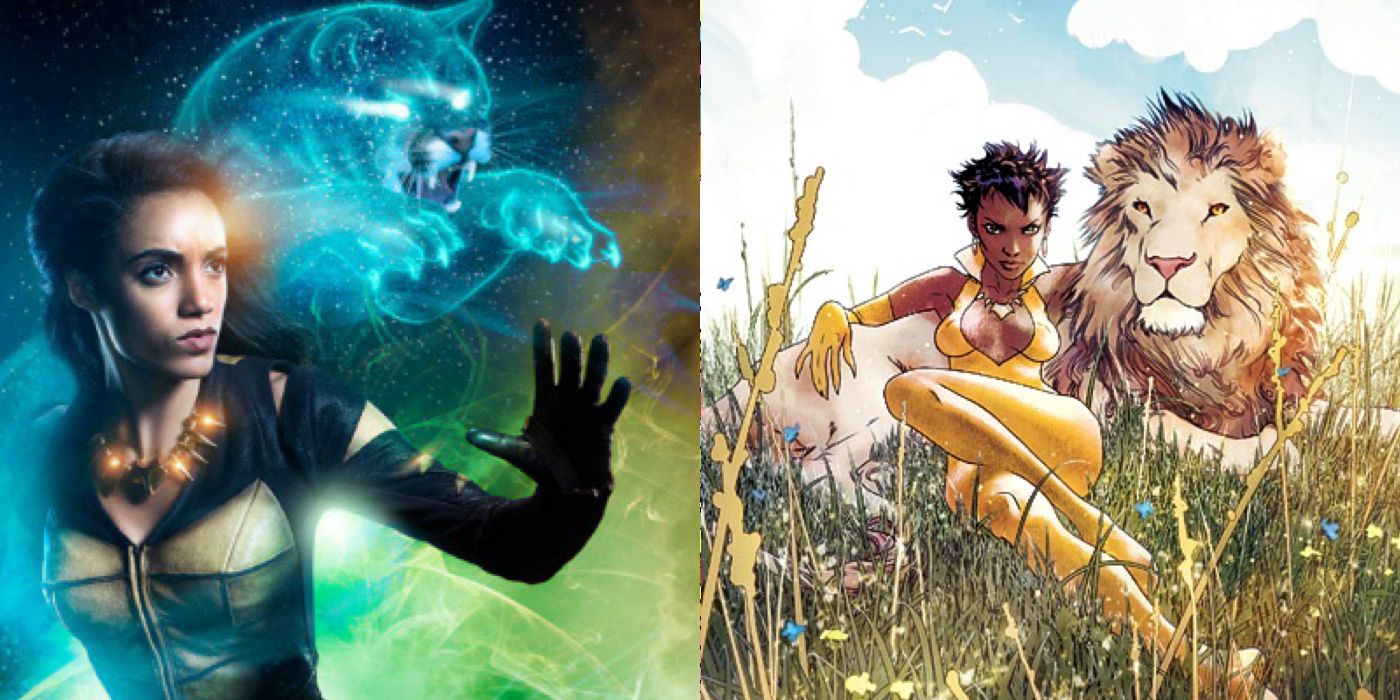The ever-growing Arrowverse on the CW has proven to be a dream for DC fans who aren't quite satisfied with the film side of things. While Arrow, The Flash, and Supergirl have all provided avenues to explore a number of comic book characters and storylines, DC’s Legends of Tomorrow has a premise that’s perfect for exploring the weirdest and wildest corners of the DC Universe. From the Old West to the far future, the Legends have hopped through space and time to battle evil and save history. Along the way, they’ve met a number of iconic comic book characters who have been adapted for TV.
We’ve already highlighted how the characters on Supergirl compare to the comics, and how the villains of Arrow and the rogues of The Flash match up, so it’s only right that we do the same with Legends. We recently published a list on how a number of Arrowverse characters compare to their comic counterparts, and it included the Atom, White Canary, both versions of Firestorm, Rip Hunter, and the Hawks. So as not to repeat ourselves, we left them out of this list. Luckily, Legends of Tomorrow has a sprawling cast, so here’s How 15 Characters Compare To The Comics.
15. Jonah Hex
A mix between Boba Fett, Billy the Kid, and Two-Face, it’s no wonder that Jonah Hex is such a fan-favorite. Despite his gruff demeanor and frightening appearance, he’s actually more on the side of the angels than those other three. As a bounty hunter in the Old West, he’s certainly not afraid to dole out lethal justice. Still, he honors the innocent and the law (of the West, at least). Even his past as a Confederate soldier was redeemed when he abandoned the army after hearing Lincoln’s Emancipation Proclamation.
While Jonathon Schaech’s two appearances on Legends of Tomorrow haven’t given us a ton of backstory, most of his look, personality, and past seem to be intact from the comics. The one big change, as revealed earlier this season, is how he got his infamous face. In the pages of DC Comics, Hex was sold to an Apache tribe by his father as a teenager and raised by the clan. Years later, he got caught up in some drama with his adopted brother and the woman they both loved. Long story short, Hex had to cheat a bit during a ritual battle against his foe, which earned him the “Mark of the Demon.” Just as bad as it sounds, the mark involves a heated tomahawk being pressed onto the face. In the show, Hex reveals that the destruction of the town that Rip feels responsible for involved Hex’s enemy Turnbull burning the townspeople alive and giving Hex his signature mark.
14. Obsidian
Like Hex, Obsidian has popped up in two episodes so far of Legends. When the team visits the '40s and meets the Justice Society of America, we don’t get to see more than a quick glimpse of Obsidian's costume and powers. Luckily, some of the Legends run into him years later when they visit DC in the '80s, and we get to know him a bit better. As played by Lance Henriksen, Obsidian retains the overall look and powers of his comic book counterpart. He also retains Todd James Rice’s sexual orientation, though we’ve yet to hear him mention that his father is the original Green Lantern.
Given his ability to manipulate shadows, and the fact that he’s one of the only surviving members of the JSA, there’s a good chance we’ll see Henriksen turn up again. It’s unlikely that the CW would hire someone of Henriksen’s caliber and only have him show up for one episode, so hopefully the future will continue to stay true to his comic roots and delve into his history a bit more.
13. Vandal Savage
We recently went in-depth about Vandal Savage’s biggest and best comic book moments, and the piece proved over and over again that Casper Crump’s portrayal of the immortal mastermind in the Arrowverse leaves a lot to be desired. In the comics, Savage is an ancient human living 50,000 years in the past. A mysterious meteorite lands near his tribe, and Savage is bathed in its radiation. The event grants him enhanced physical prowess and the inability to die. Using this great power, Savage amasses tens of thousands of years worth of knowledge, skills, and connections.
In the pages of DC Comics, Savage is a tactical genius, an incredibly skilled martial artist, and one of the Justice Society’s and Justice League’s greatest threats. Sadly, the Arrowverse version is rather meek in comparison. He’s only been around since ancient Egypt, he doesn’t appear to be a particularly gifted fighter, and he certainly lacks Savage's strength and viciousness. While the death of such a classic DC villain in the Arrowverse would be cause for mourning, we’re all better off without Crump’s take on Vandal Savage.
12. Per Degaton
First appearing in 1947’s All Star Comics #35, Per Degaton is a time-traveling villain who regularly battles against the JSA. Aside from being a skilled fighter and master strategist, Degaton is also equipped with time discs. His larger, singular disc allows him to travel through time and cause chaos, while his multiple smaller ones can be used as aging weapons. On top of that, he has limited precognitive abilities and can become intangible at will. Given his power-set, Per Degaton would make for a worthy foe against the time travelling heroes of Legends.
Unfortunately, like Savage, Per Degaton is considerably diminished for his portrayal on Legends of Tomorrow. Instead of a tim- traveling madman, the Degaton of the show is a little boy in the near future who Savage is grooming to become a dictator. In Rip’s time, Degaton was the ruler who unleashed a deadly virus that primed the Earth for Savage’s eventual conquest. The season 1 episode, “Progeny,” however, reveals that Degaton was merely a pawn and Savage was responsible for his entire reign and the virus. Maybe the show will pull some timey-wimey shenanigans and Per Degaton will return fully grown and with his full set of comic book powers and tools. Until then, it’s better if we just forget about his sole appearance.
11. Time Masters
Here's one of the bigger deviations: the Time Masters from the comics are actually a team led by Rip Hunter. Essentially the Legends, the group and Hunter himself were created back in 1959 by Jack Miller and Ruben Moreira for Showcase #20. Two years later, they starred in Rip Hunter...Time Master, and used Rip’s Time Sphere to travel the timestream to fix anomalies and save history.
In Legends of Tomorrow, the Time Masters have a similar duty and Rip is a member. Instead of being the leader, however, he’s basically an operative. It’s eventually revealed that the Time Masters are corrupt and have been working with Savage toward his goals, and it’s up to Rip and his team to thwart them. Perhaps DC, WB, and the CW found the Time Masters to be too corny of a name for a series, and so opted for the hyperbolic Legends of Tomorrow instead. Either way, the team from the comics eventually abandoned the name as well, so at least the producers get points for keeping their goals intact as carried out by Rip.
10. Commander Steel
Debuting in 1978’s Steel, the Indestructible Man, Henry Heywood was a Marine during World War II. After suffering a fatal injury by Baron Blitzkrieg (whose name would later be borrowed by a flashback villain in season 4 of Arrow), Heywood’s body was augmented with mechanical parts made of... steel. Essentially becoming DC’s Captain America (unsurprising as he was created by Cap writer Gerry Conway), Heywood became Commander Steel and helped fight the Axis powers with the All-Star Squadron.
In the show, many of the Squadron’s members are merged with the JSA, and Steel is among them. Though we see him in action, he doesn’t appear to be more than human. There’s also no indication of his surgical enhancement, which would surely have been mentioned by his extremely talkative grandson when the two meet up in the '40s. While Steel is dead in the present day, the Legends are more than likely to return to a past protected by the JSA before the season ends. Hopefully then, we’ll get a bit more backstory on the original Steel.
9. Citizen Steel
Considering Geoff Johns oversees all of DC media and he created Citizen Steel, it’s no surprise that the slight alterations to the character for Legends actually provide a much more streamlined version of his origin. In both takes, he’s the grandson of Commander Steel. Created for the comics by Johns in 2007’s Justice Society of America #1, Steel is Nathan Heywood and gets in the crosshairs of Vandal Savage and his plans to wipe out the bloodlines of a number of Golden Age heroes. Attacked by the metallic Reichsmark, Nathan’s brother and mom are turned into metal statues. Nathan is able to damage the villain, however, and gets some of his metallic blood in his mouth as a result.
He’s granted the Colossus-like ability to turn his skin into metal, and also gains superhuman strength. In the show, it’s actually a gene altering formula developed by Ray Palmer and administered to save the life of Nate. Both come as a result of a Nazi attack, however, and the powers and name Nate adopts are the same. There’s some changes for sure, but it makes for a much less convoluted origin while maintaining many of the key plot elements from the comics.
8. Hourman
Like Commander Steel, Hourman is another member of the JSA in the Arrowverse who we don’t know much about and who appears to lack his enhanced abilities from the comics. First introduced in the tag of the season 1 finale of Legends, Rex Tyler is the hero known as Hourman and leads the 1940s-set Justice Society. Though we see him in battle, his augmented strength and speed from the comics don’t appear to be on display. He does seem to have some sort of way to time travel, however, as he meets the Legends in 2016 following one of his many deaths. Given this information, he’s likely to play a larger role in the season moving forward. Perhaps then we’ll get some idea of how he compares to his comic book counterpart.
Premiering in Adventure Comics #48 in 1940, Tyler is a gifted scientist who invents a pill called Miraclo. Similar to the Mirakuru from season 2 of Arrow, the pill granted Tyler superhuman strength and speed, but only for an hour. Using the pills, he fought crime as Hourman and later helped form the JSA. Given his long history and integral role in DC Comics, we definitely haven’t seen the last of Hourman in the Arrowverse.
7. Connor Hawke
In the comics, Connor Hawke is the long-lost son of Oliver Queen. Eventually, Connor meets Oliver and joins up with the hero as a fellow emerald archer. Soon enough, he learns of his true parentage and eventually becomes the Green Arrow after one of Oliver’s many deaths. For the Arrowverse version of Connor, the producers did a good bit of twisting.
Over the course of several seasons of Arrow, we learn that Oliver once had a son during college. Fans began to speculate that the child, who Oliver eventually meets during the first Arrow/Flash crossover with Legends, could one day grow up to be Connor Hawke. Oddly, though, the producers and writers opted to make the child a completely new character and instead bequeathed another Team Arrow progeny with the Connor Hawke name and trajectory. When the Legends travel to Star City in the year 2046, they discover that John Diggle’s son is operating as the Green Arrow following the “death” of Oliver. While it at first seems like a throwaway story since Diggle has a daughter named Sara, the events of Flashpoint have since altered things and given Digg and Lyla a son named John Diggle, Jr., aka the Green Arrow of 2046.
6. Waverider
This might be considered more of an Easter egg than an adaptation, as the TV version of Waverider isn’t a character, but a ship. When we first meet Rip Hunter, he pilots the time ship dubbed the Waverider. The Legends still use the ship to traverse the timestream, but fans know that the Waverider is more than just a cool name for a time machine.
In the comics, Waverider was once a man living in 2030 named Matthew Ryder (of course). To fight back against the villainous Monarch, Ryder attempts the heretofore impossible and tries to travel back in time. In the past, this killed all who tried. Ryder doesn't just survive the journey, though-- he actually merges with the timestream and gains a whole host of powers, and a brand new look. Sporting yellow skin and flaming hair, Ryder switches vowels and becomes the heroic Waverider. His exposure to the timestream gives him mastery over time travel, plus lightspeed flight and the requisite energy blasts. The producers likely figured this character was too similar to Firestorm and would provide nearly limitless time traveling abilities, so they decided to at least pay homage to him when they named Rip’s ship.
5. Chronos
It seems that the characters with the most explicit connections to time travel in the world of DC comics are changed the most in the Arrowverse. Case in point: Chronos. Introduced in 1962 as one of the Atom’s rogues in the hero’s self-titled comic, Chronos began as a small-time crook named David Clinton. Like Barry Allen, he’s always late, and so dedicates his eventual stint in prison to studying time. Upon his release, he adopts the name Chronos and a Vision-like costume, committing crimes with clock- and time-related gadgets, all while pestering the Atom. Eventually, he develops actual time travel technology, which considerably ups his villain game.
On Legends, we’re introduced to a much grittier version of Chronos. Here, he’s essentially a bounty hunter for the Time Masters, tasked with hunting down Rip and his team. He ditches the cape for an alien exosuit and big gun, losing all the puns and lightheartedness of his comic counterpart. Despite being able to single-handedly fight all 9 Legends (including a living nuclear reactor), he rarely poses much of a threat to the team. He may have been pulling his punches, however, as we learn late in season 1 that Chronos is actually the future version of Heat Wave, abandoned by the team and left for dead by his friend and partner Leonard Snart. This revelation gets a bit of an arc, but it was mostly swept under the rug as the show moved towards its finale.
4. Heat Wave
When Heat Wave was first introduced on The Flash, he was a pretty straightforward adaptation of the character from the comics (minus some headgear). He had the goggles, the heat gun (built by Rory in the comics and Cisco on TV), and the fiery disposition. He’s also been regularly shown to be obsessed with fire, a trait that often threatens to consume him. The one major change was his friendship with Snart, as the comics saw them to be more adversarial, despite working together in the Rogues. Introduced in 1963, Heat Wave is one of Flash’s oldest villains, so it was refreshing to see a nearly exact copy of Mick Rory brought to life on TV.
Legends, however, has added some more nuance and some changes to the character. When it was first announced that Rory and Snart would be teaming up with the heroic Legends, both the fans and characters in the show raised an eyebrow. Thanks to more layered performances by both Dominic Purcell and Wentworth Miller, though, the characters have become something of anti-heroes. While Rory was originally out only for himself (and lots of money), he’s now become an unquestionable hero on the team (as long as he’s allowed to get into a few bar fights). The addition of the Chronos arc helped further his development, letting the character and actor explore the idea of being betrayed and abandoned. The incident acted as Rory’s very own crucible-- one he emerged from as a true hero.
3. Captain Cold
Like is partner Heat Wave, Leonard Snart and his alter-ego Captain Cold got a fairly faithful adaptation when they moved from comics to TV. In fact, the Arrowverse version of Cold is actually an improvement on the comments. Introduced in 1957 for Showcase #8, Cold was created by the same team that would later make Heat Wave, John Broome and Carmine Infantino. Just like Rory, he’s got a history with his element and eventually became a crook who somehow invented a super powerful weapon. The show justifiably drops the idea that Snart could create his cold gun, and instead lets the more capable Cisco design the tech. Still, Snart’s history of having an abusive father and a younger sister who's also a criminal is kept intact.
The improvements came long before Snart made a heroic turn similar to Heat Wave’s, though. Even during his time on The Flash, Snart was shown to be a villain with a code. He doesn’t kill, possessing a calm demeanor that helps balance Rory’s hot-headedness. While the comics and various animated appearances have often portrayed Cold as a bit of a rube, the Arrowverse version uses Wentworth Miller’s acting skills to give us a cool and calculated version of the villain. While the events of the season 1 finale of Legends took Snart out of the picture, an actor and anti-hero of his caliber likely won't be gone for good.
2. The Legion Of Doom
We won’t see the full Arrowverse version of the Legion of Doom until they form for the midseason finale, but Legends has given us half of their take on the supervillain team so far. Unlike the previous entries on this list, the Legion of Doom actually originated on TV before making their way to the comics. Created for the animated series Challenge of the Super Friends, the Legion of Doom were introduced in 1978 as a group of supervillains led by Lex Luthor. Throughout the series and its subsequent iterations, the cabal proved a continual threat to the Justice League. Since then, they’ve popped up in various shows, movies, and comics.
For the version of the team set to appear on Legends, Lex Luthor has been replaced by the similarly-styled Damien Darhk, with Malcolm Merlyn potentially vying for the same position. Their might is beefed up by the addition of Flash’s foe Eobard Thawne, aka the time traveling speedster dubbed the Reverse-Flash. But we know that one more criminal will be joining their ranks: Captain Cold. Looks like we won’t have to wait long at all to see the return of Snart, but why he’s returned to villainy is anyone’s guess.
1. Vixen / Amaya Jiwe
In the comics, Mari Jiwe McCabe was created in 1981 by Gerry Conway and Bob Oksner for Action Comics #521. Using a totem given to her ancestors by the trickster god Anansi, Mari is able to call upon the powers of the animal kingdom to help her fight evil. A nearly identical version of this character was introduced last year on the CW Seed webseries Vixen, which saw Megalyn Echikunwoke voicing the character before she made her live-action debut last season on Arrow. Despite turning in a fantastic performance and the webseries being renewed for a second season, scheduling conflicts prevented the actor from reprising her role when the producers decided to include her on season 2 of Legends of Tomorrow. The solution: recast the role.
Luckily, the recast wasn’t a typical one, and instead the character of Amaya Jiwe-- Mari’s grandmother and a member of the JSA-- was created. By doing so, the Arrowverse was able to bust out Vixen’s incredibly cool totem powers as much as they wanted, while still keeping Echikunwoke around should the modern Vixen ever need to return. Hopefully, Maisie Richardson-Sellers’ version of the character will get to meet her granddaughter one day, and Mari can explain why she’s never mentioned that her grandmother used to run around using the same name as her and fighting crime with the totem.
---
Which comic book heroes and villains are you hoping to see on an upcoming episode of Legends of Tomorrow? Let us know in the comments!
Legends of Tomorrow airs on the CW Thursdays at 8 pm EST.

